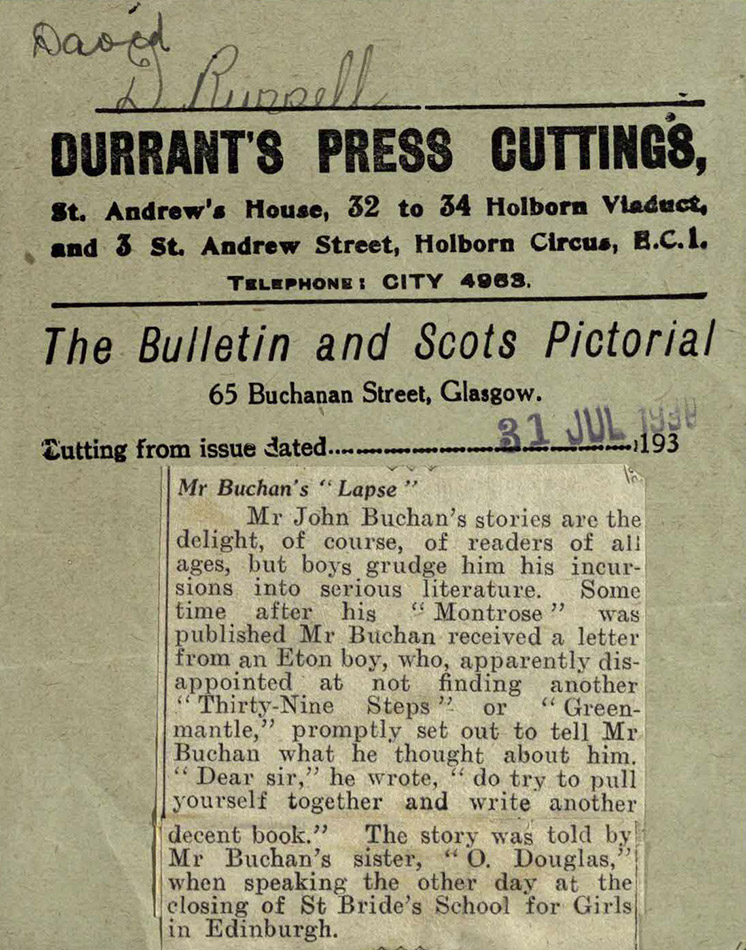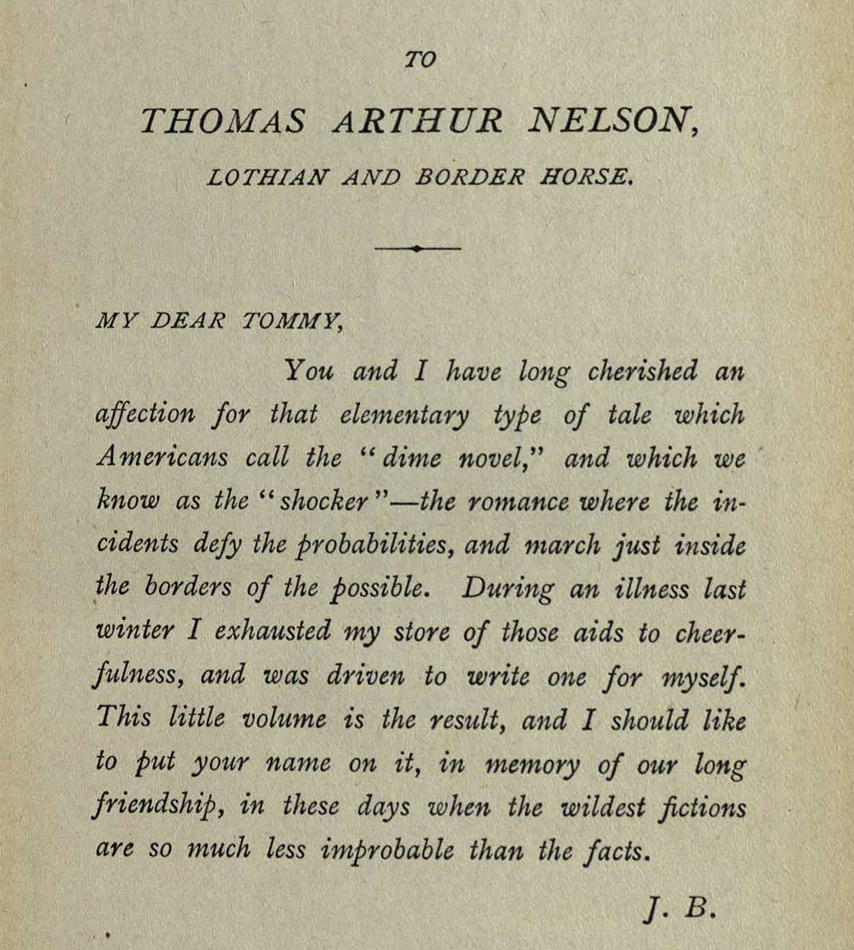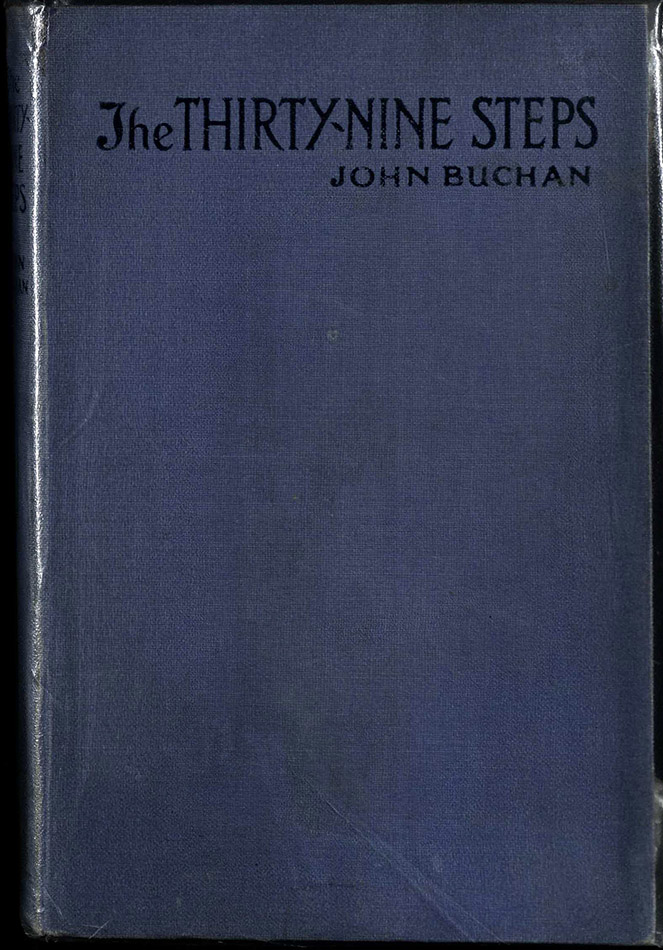Reading the Collections, Week 8: John Buchan, The 39 Steps
The first time I came across The 39 Steps I was in London with my family. We were in Piccadilly Circus and thanks to my aunt I ended up watching one of the most entertaining plays I have seen in my life. Advertised as an adaptation of the film by Alfred Hitchcock, it was only recently that I discovered the author behind the story, John Buchan. Born and raised in Scotland, Buchan was a prolific writer, an historian and a politician. He was twice nominated to be Rector of St Andrews University, in 1925 and 1928, and received a honorary degree (LLD) from St Andrews in 1930.
In our collections I have found various items of correspondence with Buchan as well as records of a lecture he gave in 1930 at St Andrews University on James Graham, the first Marquis of Montrose (ms38515/11/15/1). His talk was part of a series of talks supported by the Walker Trust on the subject of Leadership. In his talk he points out two core characteristics of James Graham, namely, intellectual courage and a sense of a greater cause. I thought it probably was no coincidence that these values were somewhat present in Richard Hannay, the hero of The 39 steps. Along with the lecture files I also found a newspaper cutting by a disappointed reader of Montrose and Leadership, who might have been expecting a more adventurous narrative.

“Dear Sir” he wrote, “do try to pull yourself together and write another decent book.”
Buchan wrote The 39 Steps during a period of illness, as a means to entertain himself. Right at the beginning of the book he starts with a short letter to his friend Thomas Arthur Nelson in which he states that he wrote this “shocker “as an “aid to cheerfulness”. He also mentions how the story seems to defy the borders of what would be possible in real life without seeming implausible. The book was written in the months preceding World War I and it was first published in 1915, 100 years ago. At the Special Collections we hold a 1915 edition bound in a plain blue cover (r PR6003.U13T4F15).

Without really knowing what to expect, and having such a good memory of the play, I dived into the pages of the story. Following Richard Hannay’s mishaps amidst an international conspiracy threatening Britain was a real treat. The plot has the right amount of suspense, quirky characters (as well as dangerous ones) and the descriptions of Scotland are delightful. Hannay himself is a resourceful character, ready to devise ingenious ways to trick his pursuers, while meeting unexpected help from the most peculiar people along the way. On the other hand, it seems that Buchan’s attempts to keep the story plausible, yet gripping, produces an almost unrealistic sequence of events. Hannay keeps escaping the police and his pursuers in all sorts of circumstances, always finding himself in more thorny situations, and always finding new ways to escape. In the end, of course, the hero defeats the evil conspirators.

One of the aspects I found most interesting was to realise how Buchan blends his own reality and experiences into the character and the events that take place in the book. He spent some time in South Africa and the background of Richard Hannay is full of references to his own travels there as well as to some of his acquaintances. The same happens with the scenes of Scotland, where he grew up. The other obvious reality is the approach of war, which becomes a central aspect through the conspiracy to defeat Britain.
I must say that I enjoyed the story and will be reading more books by John Buchan in the future. His writing style is clear, easy to follow and the story was definitely amusing.
-Inês Fonseca
Reprographic Technician